How to determine when to remove carrots from the garden for storage
Timely harvesting of root crops is the key to their long storage in winter without loss of taste. This statement is also true for carrots. If you dig it up too early, the vegetables will quickly become flabby and dry; if you delay harvesting, they will begin to sprout and become tasteless.
Below we will tell you in detail about when to remove carrots from the garden for storage and how to do it correctly.
Optimal harvest time
When deciding when to pick carrots from the garden, several factors are taken into account. The region where the crop is grown, the characteristics of the variety, weather conditions, and the phase of the moon are taken into account.
Depending on the region
The climatic conditions of the southern regions of Russia differ sharply from Siberian ones. Therefore, the timing of carrot harvesting in these regions also differs.
When to start digging? When the average daily temperature drops to +4…+5°С. At this time, carrots stop growing, and it makes no sense to keep them in the ground any longer.
Need to know! Overstaying root crops in the garden causes the carrots to sprout new roots. And this worsens its taste.
When are carrots dug up for the winter, depending on the region? Below are the average harvest times.
In the middle lane
The middle zone includes the European part of Russia from the borders with Belarus in the west to the Volga region in the east and from Karelia in the north to the Black Earth region in the south. In this region, the orange beauty is dug up in October, choosing a dry, sunny day.
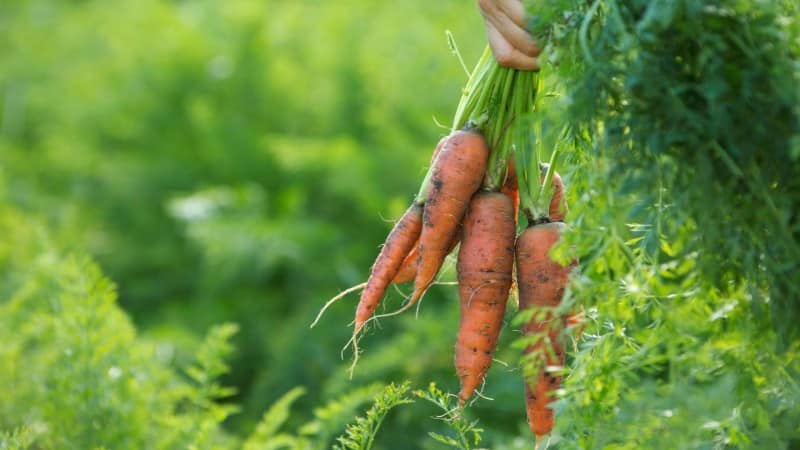
In the Urals and Siberia
In areas with a harsher climate and short, cool summers, carrots are dug up in the second half of September, since frosts already begin in October. Frozen root crops are poorly stored in winter and quickly rot.
In the southern regions
When do they dig up carrots for the winter in the south? Here the harvest is carried out until the end of October - beginning of November. The climatic conditions of the southern regions make it possible to grow two crops of root crops per season.
Depending on the variety
There are early-ripening, mid-ripening and late varieties of the crop. The approximate ripening times for each variety are indicated on the seed package.
Early varieties and winter carrots
Early ripening varieties are dug up 80-90 days after sowing. And to obtain bunched products, the harvest is harvested within 1-2 months.
Attention! Root crops of early ripening are not placed on winter storage. They are eaten immediately or used for blanks. Carrots sown before winter are also harvested in mid-summer and are not used for long-term storage. If you keep it in the ground, the root vegetables will crack and become tasteless.
Mid-season varieties
Mid-season varieties are harvested 80-110 days after planting. Maturity is indicated by yellowing lower leaves. These root vegetables, like late carrots, are perfectly stored in winter.
Late varieties
Late-ripening varieties are harvested later than all others - 125 days from the date of sowing. Such root vegetables contain the most sugars and are stored without loss all winter.
Depending on the weather
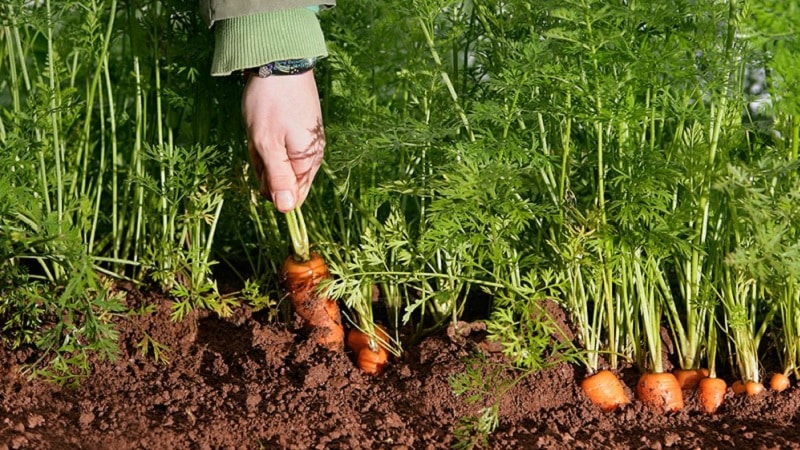
The harvest is harvested on a dry, sunny day. It is advisable that there is no rain a few days before. This will simplify the process of digging up and cleaning root crops from adhering dirt.
Cool, dry weather is not a reason to leave vegetables in the ground longer than expected. Root vegetables will take on additional roots and become tough and bitter in taste.
According to the lunar calendar
The moon affects the movement of cell sap in plants. It is recommended to harvest in the waning phase, when fluid circulation is slow. During intermediate periods (during a full moon, new moon or eclipse), it is undesirable to carry out any gardening work.
According to the lunar calendar, favorable days for harvesting root crops in 2019 are considered: in September - 8.9, 16-21, 25, 26; in October – 3-6, 15-19, 22-25.
The eastern horoscope directly affects the development of plants. The passage of a satellite in Aries and Leo is considered favorable, neutral in Capricorn, Taurus and Gemini, negative in Virgo and Pisces.
Signs that the crop is ready for harvest
The ripening dates indicated on seed packages are a rough guide. Depending on the growing conditions, the onset of ripeness may shift in one direction or another.
The following signs of ripeness will help you decide on a specific harvest date:
- yellowing of the lower foliage;
- growth of thin roots on root crops;
- cracking of root crops.
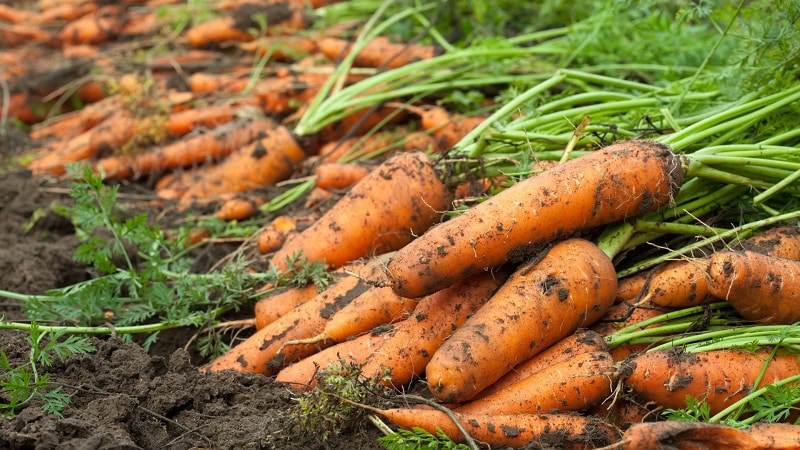
Cleaning technology
A dry, sunny day is chosen to dig up the crop. If there has been no rain for a long time and the soil is dry, it is better to water the beds a little 1-2 days before harvesting. It is easier to extract root vegetables from damp soil without damaging the thin skin.
If the soil in the garden is loose, pull them out with your hands by the tops - vertically, so as not to break off the carrots.
If the soil is heavy and dense, first carefully dig up with a pitchfork or shovel.
When the crop is dug up, it is cleaned of adhering dirt, the tops are removed and dried for 2-3 hours. It is not recommended to wash carrots before storing them for long-term storage, as there is a high risk of damaging the thin carrot skin. Fungal pathogens enter vegetables through scratches and wounds.
Removing tops
The tops of root crops are cut off immediately after digging. Leaves that are not removed continue to evaporate moisture, which causes the carrots to wilt.
We list three main ways to remove carrot tops:
- Twisting. Some summer residents believe that this improves the shelf life of root crops.
- Cutting with a sharp knife or scissors. This method is suitable for short-term storage. If you leave such root vegetables until spring, new greenery will begin to grow from the petioles.
- Cutting off greenery along with the top of the root crop (growing point). In this form, carrots will remain until spring without sprouting.
Preparation for storage
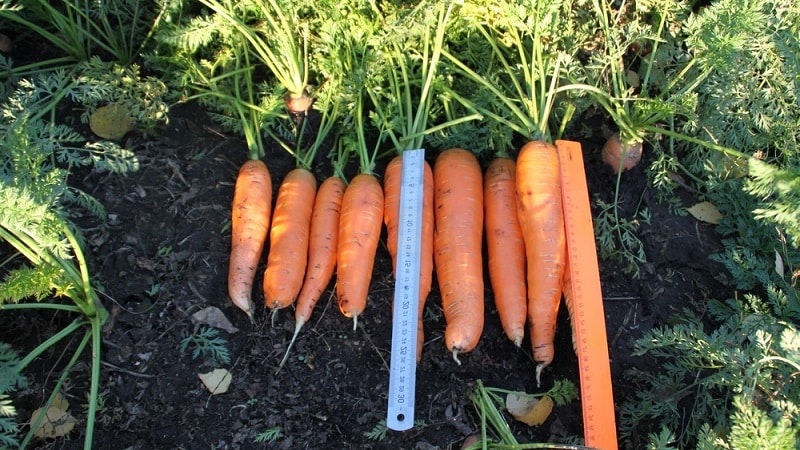
Removed from the garden, peeled carrots without tops are transferred to a ventilated place to dry. You cannot leave root vegetables in the sun, as they will quickly wither. After a few hours, the carrots are inspected, sorted and placed in boxes.
Advice. Do not send root vegetables that show signs of damage or disease to the cellar. A few spoiled specimens will destroy the entire harvest in a short time. Fold them separately and use them for stocking or cooking.
Carrots, laid out in boxes, are kept for several days at a temperature of +10...+13°C to cool and heal minor damage. The vegetables are then transferred to storage.
Storage methods
There are several storage methods that allow you to keep vegetables fresh for several months.Whatever method you choose, keep in mind that the optimal air humidity for storing fresh vegetables is 90-95%, and the temperature is from +1 to +3°C.
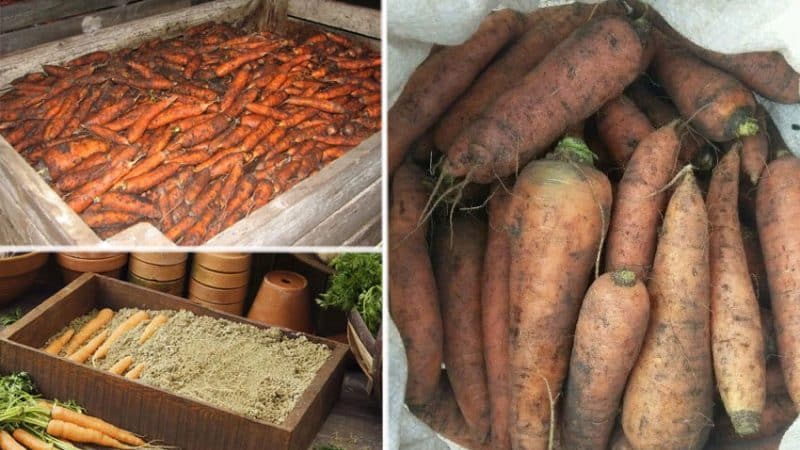
In sand
Popularity of this method due to its availability and effectiveness. Sand absorbs moisture, prevents rot, and ensures a constant temperature.
Need to know! If you plan to place the boxes in a cold cellar, use wet sand to cover the root vegetables. If the temperature at the storage location is above +6-7°C, it is better to use dry sand.
A 5 cm layer of sand is poured onto the bottom of the box. A layer of carrots is placed on it so that the root vegetables do not come into contact with each other. There is another layer of sand on top, etc. Instead of boxes, old buckets and basins are suitable as containers.
In onion or garlic peel
In this case, the carrots in the boxes are generously sprinkled with onion or garlic peels. The active substances contained in onion and garlic peelings prevent the development of fungi and bacteria, and, consequently, the appearance of rot.
In the sawdust
Similarly, carrots are stored in boxes with sawdust. The best option is sawdust from coniferous trees. The phytoncides contained in them prevent the germination of root crops and prevent the development of fungi and bacteria.
In plastic bags
In small plastic bags, carrots can also be stored for a long time without loss. Open bags are placed in a cellar or basement. If they are tied, be sure to make holes for ventilation. Then condensation and carbon dioxide will not accumulate inside.
In clay
An effective but labor-intensive way to store root vegetables. Each carrot is dipped in clay diluted with water to the consistency of sour cream and dried.Root vegetables are placed in boxes or cardboard boxes and stored in a cellar or basement.
In the freezer
It is convenient to immediately process and freeze carrots rejected during sorting. So it definitely won't spoil. Root vegetables are thoroughly washed, chopped using a grater or food processor, placed in bags and sent to the freezer. Such preparations are convenient to use when preparing soups and vegetable dishes.
Conclusion
To correctly determine the date when to harvest carrots, take into account the growing region, varietal characteristics, as well as signs that the vegetables are ready for harvesting. It is important to properly prepare the harvested crop for storage. Then the juicy, crispy root vegetables will delight you with their excellent taste until spring.